This step by step diy article is about cat house plans. If you want detailed plans for building a basic cat house, either for indoor or outdoor, you should pay attention to the instructions described in the article. In addition, if you know the basic woodworking techniques and buy quality materials, you can get the job done in just a few hours. From our experience, we recommend you to build the frame of the cat house out of 2×2 lumber, as you could add rigid insulation boards.
Drill pilot holes trough the components before driving in the wood screws, to prevent the wood from splitting. In addition, align all the components at all ends, if you want to get the job done properly and build a cat house with a nice appearance. Plumb the walls before locking them into place and check if the plates are horizontal. In addition, adjust the design and size of the box to your needs. See all my Premium Plans HERE.
Projects made from these plans
It’s that simple to build a cat house!
Cat House Plans
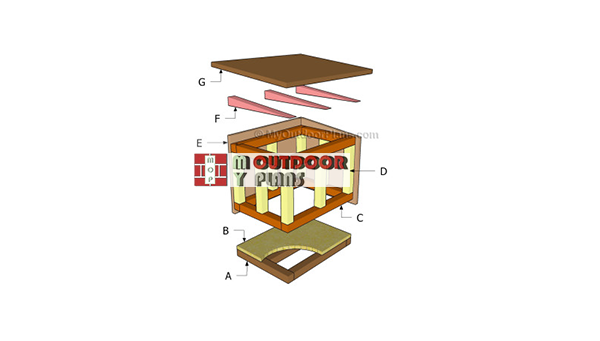
Building-a-cat-house
Cut & Shopping Lists
- A – 2 pieces of 2×2 lumber – 14” long, 3 pieces – 16″ long JOISTS
- B – 1 piece of 3/4″ plywood – 14″x19″ long FLOOR
- C – 4 pieces of 2×2 lumber – 11”, 4 pieces – 19” long PLATES
- D – 8 pieces of 2×2 lumber – 10″ long STUDS
- E – 1 piece of 3/4″ plywood – 15 1/2″x19″ long, 1 piece – 14″x19″ long, 2 pieces – 15 1/2″x15 1/2″ long EXTERIOR WALLS
- F – 3 pieces of 2×2 lumber – 14 3/4” RAFTERS
- G – 1 piece of 3/4” plywood – 17 1/2″ x 22 1/2” long ROOFING SHEET
- 4 pieces of 2×2 lumber – 8 ft
- 1 piece of 3/4″ plywood – 4’x8′
- 2 1/2″ screws
- 1 1/4″ screws
- wood putty, wood stain
Tools
![]() Hammer, Tape measure, Framing square
Hammer, Tape measure, Framing square
![]() Miter saw, Drill machinery, Screwdriver, Sander
Miter saw, Drill machinery, Screwdriver, Sander
Time
Related
Building a cat house
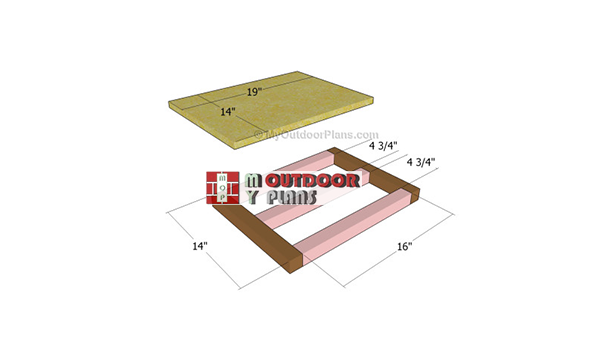
Building-the-floor-of-the-cat-house
The first step of the woodworking project is to build the frame of the floor. As you can notice in the diagram, we recommend you to build the floor frame out of 2×2 lumber. Drill pocket holes at both ends of the long joists and insert 2 1/2″ screws into the perpendicular components.
Make sure the corners are square and leave no gaps between the components. Build the floor out of 3/4′ plywood and secure it to the frame using 1 1/4″ nails.

Attaching-the-side-walls
Continue the project by attaching the front and back walls to the floor of the dog house. As you can easily notice in the diagram, you need to build the components out of 2×2 lumber. Cut the studs and the plates at the right size, after taking accurate measurements.
Drill pilot holes through the plates and insert 2 1/2′ screws into the studs. Secure the frames to the floor using screws or nails. Plumb the walls with a spirit level before inserting the screws into place.
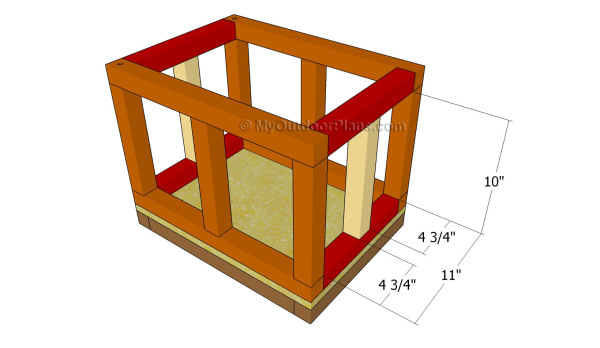
Building the side walls
Continue the project by fitting the side walls to the cat house. As you can easily notice in the diagram, we recommend you to cut the components out of 2×2 lumber at the right size. Drill pocket holes at both ends of the components and secure them together with screws. Add glue to the joints.
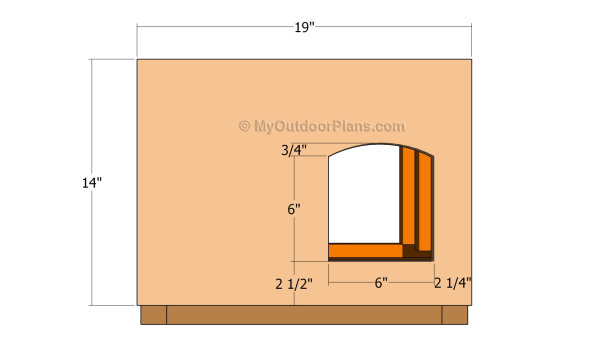
Building the front face
The next step of the project is to build the front face of the cat house. As you can easily notice in the diagram, you need to cut out a opening to the right size of the 3/4″ plywood panel. Use a jigsaw to make the opening and smooth the edges. Secure the panel to the frame using finishing nails and waterproof glue.
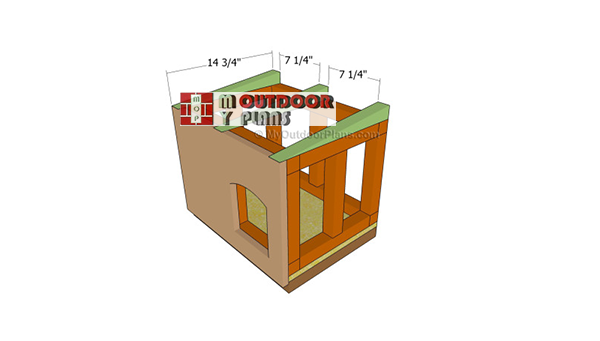
Fitting-the-rafters
Building the rafters for the cat house is straight forward process. If you want to get a professional result, you need to cut the 2×2 pieces of lumber on diagonal using a circular saw. Fit the rafters to the cat house and secure them to the structure using galvanized screws.

Attaching the back
Next, attach the 3/4″ plywood back to the structure of the cat house. Smooth the edges with fine-grit sandpaper and align the edges with great care. Add glue to the joints and leave no gaps between the components.
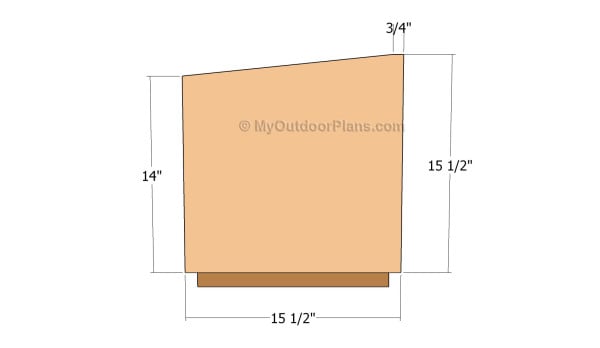
Attaching the sides
Build the sides out of 3/4″ plywood. Mark the cut lines on the sheets and get the job done with a circular saw. Smooth the edges with fine-grit sandpaper and secure the component to the structure using finishing nails.

Attaching the roof
One of the last steps of the project is to attach the roof to the cat house. Mark the cut lines on a piece of 3/4″ plywood and get the job done with a circular saw. Smooth the edges with fine-grit sandpaper and center the component to the structure. Secure the component into place using finishing nails.
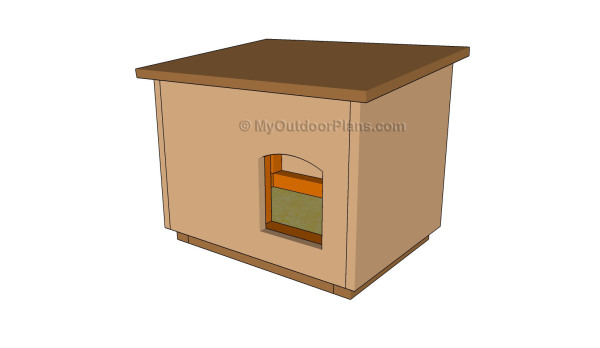
Cat house plans
Last but not least, you have to take care of the final touches. Therefore, we recommend you to fill all the holes with wood filler and to let the compound to dry out properly. In addition, sand the surface with 120-grit sandpaper and vacuum the residues thoroughly.
Top Tip: Protect the cat house from bad weather by applying several coats of paint. Make sure all the screws are inserted properly.
This article was about cat house plans. If you want to see more outdoor projects, we recommend you to check out the rest of the projects.




